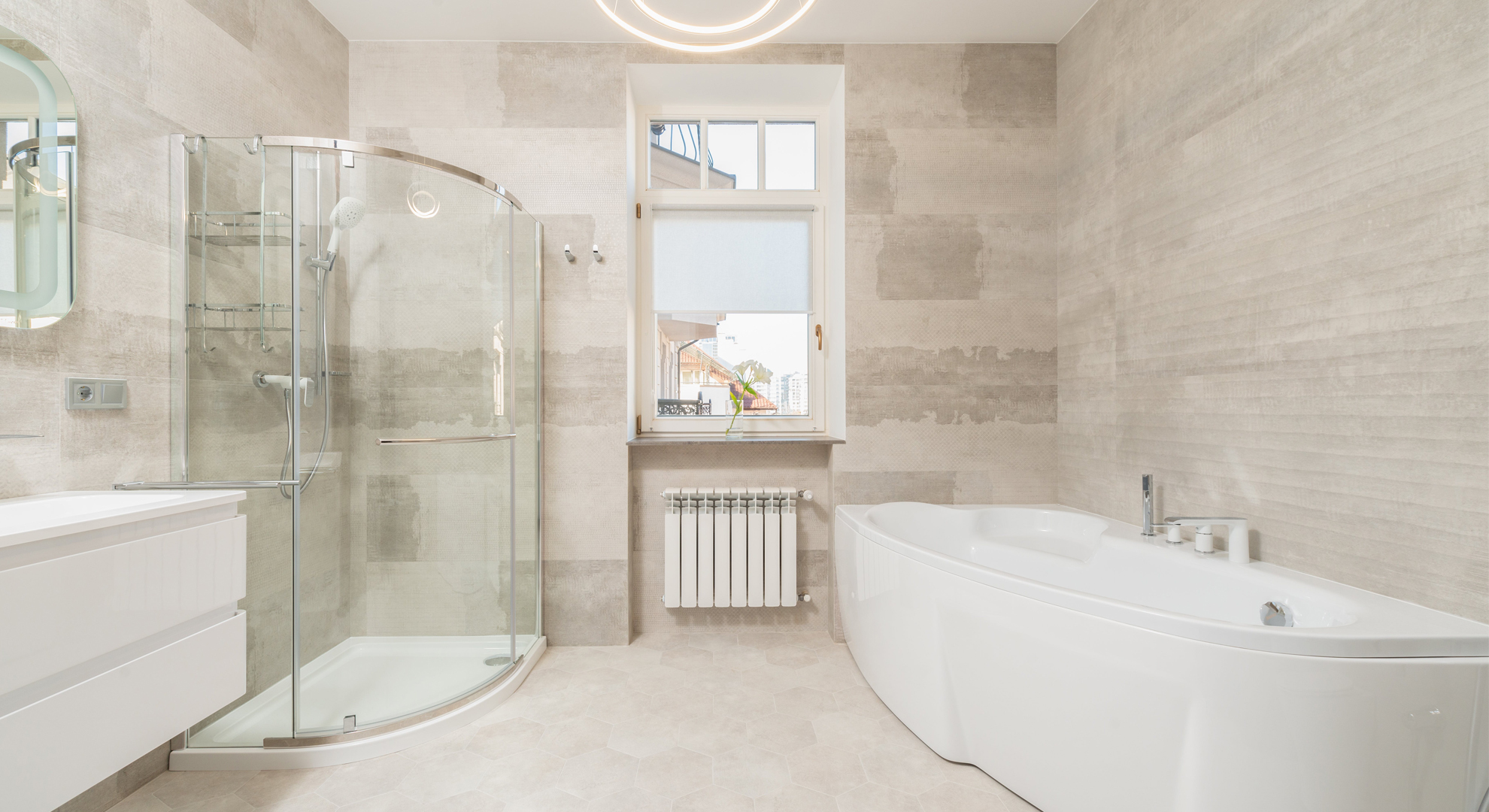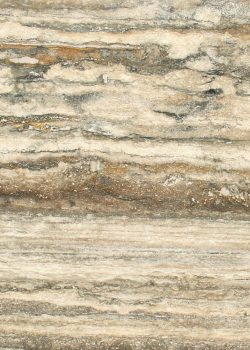In the world of natural stones, few materials can rival the timeless beauty and versatility of travertine. Its rich history, unique characteristics, and wide range of applications, has made it a long time favorite among architects, contractors, designers, and homeowners alike. Travertine takes shape through the process of carbonate minerals precipitating out of solution in both ground and surface waters. This frequently occurs near the opening of geothermally heated hot springs and/or within limestone caves. The stone ranks 4 on the Mohs Hardness Scale.
Interestingly, while travertine can be discovered in various locations worldwide, it is not mined everywhere. In fact, its name is rooted in the Latin word ‘tiburtinus’, signifying ‘of Tibur’ (the former name for Tivoli, an Italian locale). Ancient Roman referred travertine to as Lapis Tiburtinus, which translates to ‘the stone from Tivoli’.
Travertine has been employed in many famous architectural structures, both modern day and ancient times. For instance, in the past, it was used to construct the main pillars and walls of the Roman Colosseum. In the 1900s, it graced the renowned French tourist attraction, the Basilique du Sacre Coeur. In recent times, Chicago’s Willis Tower and Los Angeles’ Getty Center have utilized travertine, employing it for interior wall finishes and exterior facades, respectively.





CHARACTERISTICS AND BENEFITS
Composition and Colour: Travertine is primarily composed of calcite and gypsum, with the majority of its minerals being transparent. Only 1% of its composition contains hints of yellow sulfur, brown iron, and organic pigments, which contribute to its gentle color variations in shades like honey, beige, or pink. However, it’s worth noting that travertine can also appear in darker hues, such as brown and black.
Travertine exhibits a spectrum of colors, encompassing shades ranging from tan and ivory to warmer tones such as honey, burnt oranges, and reds. In some cases, the presence of cyanobacteria (blue-green algae) during its formation can introduce hues of green. Occasionally, travertine can even display a stunning silver variety.
Texture: The unique texture of this natural stone is attributed to its fibrous and porous nature, a characteristic partly formed by the presence of gas bubbles trapped between its layers. This creates spherical hollows, resembling pores or cavities, giving travertine its distinctive appearance.
Resistance: Travertine demonstrates exceptional resistance to bending and external factors like bending, thermal shock, corrosive agents, abrasion, and humidity. Its origin in aquifers guarantees its unwavering ability to withstand moisture. Except for polished travertine, the texture of this natural stone provides excellent slip resistance, making it an excellent option for outdoor areas.
Durability: Travertine stone has long durability, evident in centuries-old structures that remain in pristine condition. Furthermore, it maintains its color remarkably well even when exposed to UV radiation, preserving its original vibrancy, even when used outdoors.
Stability: As travertine is formed from calcium carbonate, it exhibits remarkable stability when confronted with fluctuating temperatures. Hence, for regions experiencing frequent freeze/thaw cycles, travertine proves to be a dependable choice.
Environmentally-friendly: Manmade concrete paver products can entail extensive use of hazardous chemicals and intricate manufacturing processes. However, as a natural stone, travertine involves fewer harmful chemicals throughout its journey from the quarry to your space.
Replaceable: In the event that an individual tile becomes damaged, whether from a heavy impact or an acid spill causing surface damage, replacing the affected tiles is a relatively easy.
DISADVANTAGES
Porous: Since travertine possesses a porous structure, particles like dirt, dust, and grime can become trapped within its pores, leading to unsightly stains over time. Additionally, acidic substances such as coffee, juice, wine, soda, and tomato sauce can stain and damage the travertine surface. Fortunately, this can easily be addressed through routine cleaning and application of a natural stone sealer.
Maintenance: Travertine is low maintenance due as no harsh chemicals (example, bleach, vinegar or other acidic products) are required to clean the stone. A simple solution of soap and water is usually sufficient. However, to safeguard against staining, it’s advisable to apply a sealant to the travertine. Periodic resealing, typically every couple of years depending on the chosen product, becomes a necessary part of the maintenance routine. This, admittedly, can become somewhat tiresome and expensive over time.
WHY IS IT USED IN ARCHITECTURE AND DESIGN
Travertine, a natural stone, possesses a distinctive charm and character that are truly unmatched. Its vast spectrum of colors and patterns makes it adaptable to a diverse range of design aesthetics, ensuring it remains eternally stylish. It also has a variety of applications, like, countertops, backsplashes, fireplace surrounds, showers, ceilings, floors, patios, pool decks, walls and so on. Moreover, its inherent qualities and advantages solidify its position as a favored option. Nonetheless, it does come with its drawbacks, which can be effectively managed through consistent maintenance.
For more details log on our website : www.alasalmarbles.com or write us email : info@alasalmarbles.com
Follow our social media for regular updates...
Tag : Neolith, Cladding, Natural stone, Cladding materials, Selecting the best cladding material, Exterior, cladding, High-rise buildings, Most popular cladding material, Limestone, Travertine, Current trend in cladding, Quartzite, Choose a marble for kitchen top, Kitchen Islands, Natural marble top, Marble Countertop, Highly durable stone, Preferred options for the kitchen tops, Granite Counter tops, Cleaning the granite counters, Kitchen countertop, Best kitchen countertop, Marble, Marble, kitchen tops, Natural stones, Designing your kitchen, Granite, Caesarstone, Sintered stones, Marble and granite suppliers in UAE, Kitchen Counter, How to select kitchen counter, Quartz Slabs, Slate, Countertop options, Quartzite countertops, Cleaning quartzite countertops, Sintered Stone, Kitchen surface, Advantage of Neolith, Countertop designs, Quartz countertops, Budget friendly, kitchen countertops, Feature wall, Natural stone cladding, Granite cladding, AL ASAL MARBLE, Adhesive, Marble adhesive, Floor, Flooring, Commercial, Projects, Projects, Stones, Stones, Internal, External, Walls, Flexible, Countertops, Wall cladding, Engineered stone, Stone adhesive, Marble fixing, Marble flooring, Waterproofing, Sealing, Sealant, Marble cleaning, Marble suppliers in UAE, Marble manufacturer, Stains in marble, Marble sealer, Leading marble company in UAE, Best Marble company, Marble protection







I love your blog post.. comfortable colors & design. Did people style and design this excellent website by yourself and also would anyone rely on someone else to accomplish it available for you? Plz answer since I!|m seeking to style and design my web site in addition to would like to find out where oughout became that coming from. appreciate it